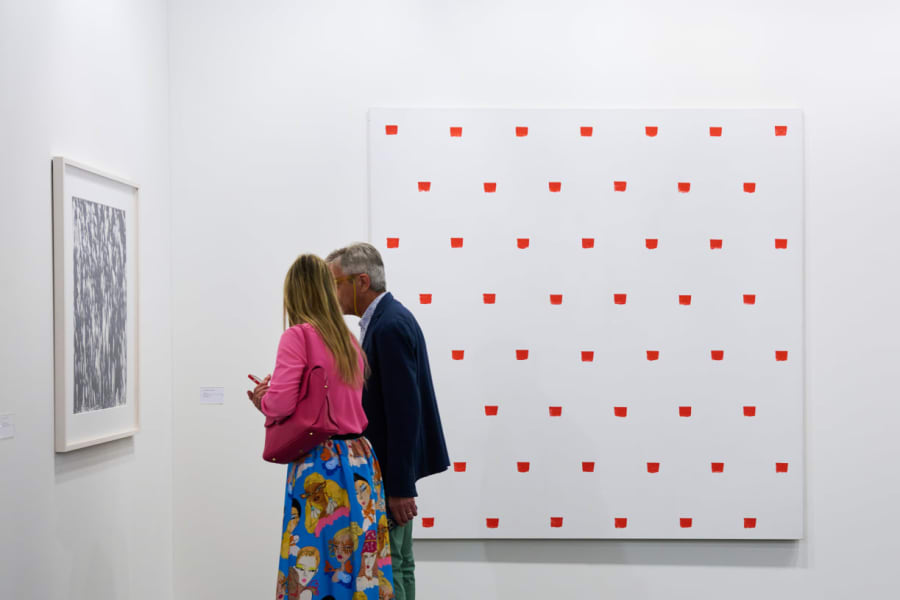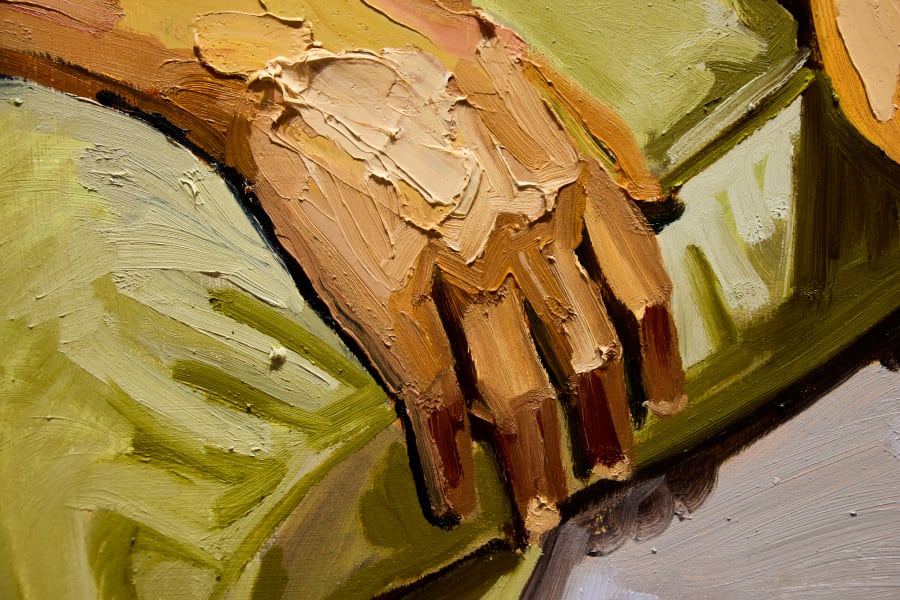Art collectors come in different shapes and sizes, from casual collectors who make the occasional, relatively inexpensive purchase all the way to important players whose purchasing habits will have a significant impact on one or more segments of the art market as a whole. Where one type of collector is presently engaged in building a collection by entering into a multitude of transactions, another is focused on managing the succession of a collection that has remained substantially the same for many years, sometimes over several generations of the same family. Some collectors are private individuals or families, while others are institutions, foundations, or museums. Regardless of a collector's attributes, there are certain considerations which are useful for any collector to review from time to time regarding how their collection will be maintained, including after they pass it on.
Transition or Divestment?
Where a collection has been owned by one or more individuals, the issue of transition will invariably be at the forefront of the collector's mind at some stage. The next generation that stands to inherit the accumulated art within the same family may not have been involved in acquiring and building the collection. In some instances, the collector's heirs may find that they, too, are susceptible to catching the ‘collecting bug’. In other scenarios, however, they may never develop the same emotional attachment to the artworks acquired, nor the process of collecting them. Nevertheless, even where there is little passion for the artworks passed on, typically, at the very least, the recipient retains an interest in the collection's commercial value. The collector surveys this year showed that over 90% of global HNWIs had inherited works in their collections, with most keeping at least some, although 19% had sold or donated all of the works they were passed on.
Where the next generation is not overly interested in the artistic value of a collection, of course the collection can be divested, selling individual artworks or clusters of artworks privately or at auction. Each step in this process needs to be defined and documented, with written agreements vital to record what was agreed.
Third-Party Service Providers
This is all the more important where the owner, be it the collector or their heirs, enlists the services of a third-party service provider, for example, to inspect and appraise the artworks, produce valuation reports, offer the works for sale, and conclude such sales, thereby acting as an agent of the collection’s owner.
The precise remit of that service provider needs to be very clearly agreed and documented. Where there is an element of vagueness, there is a risk of miscommunication. For example, an owner or an owner’s representative may simply wish to ask for the provision of services that are ancillary to a sale, but not clarify the extent of services sought in writing. If a keen service provider then misapprehends that the object is to be offered for sale, and proceeds to market the object, the legal situation can quickly become rather ‘messy’. Even where the new owner of the collection finds out about the fact that a service provider has, in fact, offered one or more artworks without authority, and intervenes before an onward transaction has become legally enforceable, the mere act of withdrawing an artwork from being ‘offered’ can be detrimental to its value and future opportunities. Potential buyers who have been told about the sale may wonder why it has been withdrawn and the artwork's reputation and its value may suffer as a result.
Where an onward transaction has in fact become legally enforceable (or at least arguably legally enforceable), the new owner may be forced into selling an object they may not yet have finally decided they want to sell. This is because, depending on applicable law, an onward buyer may be able to rely not on actual authority granted by the new owner to the service provider, but on ‘apparent authority’. In other words, it may be that the onward buyer can argue they relied on making an agreement with an apparent agent, thus binding the owner, regardless of whether they actually authorized their service provider to sell the artwork or not.
Donation or Loan
Artworks and collectibles that have been passed to the next generation may also be donated or loaned. Depending on the jurisdiction in question, donations can allow a collection’s new owners to significantly improve their inheritance tax position. As this survey indicated, 47% of collectors reported that their motivation to sell or donate inherited works was to pay estate taxes, and this motivation was as high as 72% in Japan, which also has one of the highest rates of inheritance tax globally. Different jurisdictions’ inheritance tax (IHT) thresholds naturally vary, but this is not the only consideration when comparing jurisdictions. Besides the threshold, there is also a variety of different IHT exemptions and reliefs to encourage art considered to be cultural heritage or of high artistic and historical value to be donated to the state for public enjoyment.
Donating a collection can also achieve its preservation as a collection, rather than risking the collector's project to be broken up into many pieces. Collectors can make donations with certain conditions attached to them, such as that all objects have to be exhibited together and/or making it difficult for a receiving institution to deaccession one or more objects at all. It may also be possible to name the collection after the collector and thereby serve to record his or her collecting activities for posterity.
Loaning artworks for exhibitions can add to the exhibited objects' desirability and while the objects are on loan, the lender may not be liable for insurance and other costs that can often amount to significant outgoings. The latter consideration can be particularly relevant for long-term loans. This can be an attractive option for heirs who lack storage space or wish to maintain the legacy of the collection but have found that it does not suit their own tastes. However, there are a number of issues that can arise in making a loan that collectors need to be aware of, even when it is a contemporary artwork.
Where the artworks in question are contemporary objects, the lender may have to consider any applicable artist’s rights that can be relevant to a loan. Generally, the law of the country where the exhibition takes place will govern any applicable copyright issue, for example, where the borrower of the artwork wishes to reproduce a contemporary work in a catalogue or on merchandise it plans to sell at the exhibition venue. Even where a transfer of ownership of the original work is affected by a transaction, this does not in and by itself include the transfer of the copyright of the artwork. In addition to intellectual property and depending on applicable law, an artist will typically retain inalienable ‘moral rights’ as to an artwork created by them.
Potentially adverse situations can easily arise. Sometimes a living artist is not directly involved in organizing his or her international exhibitions, for example. It is thus possible that an exhibition fails to take account of any plans the artist may have made (or is in the process of making) to organize an exhibition, such as a very first exhibition in a particular location. The degree to which an artist may be able to have a say on an exhibition of works created by them and loaned by an owner-collector, again, will depend on the applicable legal regime and jurisdiction.
Sometimes an artist or an artist’s representative may have stipulated the artist’s wishes, which the collector ought to respect. Often, no such express agreements exist. To what extent the artist’s plans, wishes, or instructions may be enforceable against third parties depends on the particular facts and the choice of law underlying the dispute in hand. However, beyond purely legal considerations, it is important to bear in mind that ignoring an artist’s wishes may have reputational ramifications for all involved: the collector, the artwork, the exhibiting institution, and the artist.
Legacy and Preservation
Applicable law is crucial to estate planning in an international context, that is to say, where a collector who is a national or ordinarily resident in one country has assets, for example, real property containing artworks, in one or more other countries. As a matter of English law, for example, testamentary succession is governed by the law of the deceased's domicile at the time of death. Consider a collector, originally from the UK, who dies while having his main residence in Italy or France. Leaving aside inheritance tax considerations, where the collector leaves assets in England, probate will be taken out in England and his assets will be administered under English law. Any applicable issues relating to beneficial succession will be decided according to the law of domicile, in this case Italy or France.
The artworks forming part of the collection will be distributed among the beneficiaries, with reference to the applicable law of succession depending on whether the estate consists of movables or immovables and whether the deceased died intestate or left a will. The law that governs intestate succession and questions such as validity of a will or testamentary capacity may depend on (i) where the deceased was domiciled, (ii) his or her habitual residence, or (iii) their nationality.
There are also European harmonization rules to simplify cross-border estate administration, determining which law applies to succession. However, these rules do not determine how such succession is to be taxed. The UK did not opt in to the harmonization rules, so English common law continues to apply. Nevertheless, the rules have universal application, meaning that they can assist British nationals who are habitually resident in an EU member state and hold assets in the EU, even after Brexit.
Thanks to the EU Succession Regulation, British nationals who are EU residents may choose English law to be applicable, and not the law of the given EU country. That can be essential, as several EU countries such as France or Italy have rules that prescribe that certain persons must benefit from the estate, whose rights cannot generally be disapplied by way of a will. For example, they grant a prescribed part of the estate to specific heirs, such as a deceased's spouse, children, or parents. English law, on the other hand, allows for testamentary freedom.
Applicable law is also an important consideration for matrimonial property. The rights of a spouse whose husband or wife predeceases them may depend on the participation of acquired property during the marriage or separation of property. Community of acquisition, i.e. jointly acquired assets used to build a collection during marriage, can thus lead to the dispersal of a collection. Regimes vary from country to country, including within the EU.
One way of protecting the integrity of a collection over generations is by way of substituting a direct ownership structure with a structure based on one or more entities, such as trusts, foundations, charities, or private companies. The relevant requirements and tax implications flowing from such ownership structures of course need to be considered carefully and complied with.
The choice of vehicle will depend on the purpose that it is to serve. Some collectors may seek to take advantage of more favorable tax rules, others may seek the long-term protection and management of family art collections. Others again may focus on charitable purposes, or the preservation of wealth. One additional important aspect tends to be the required level of confidentiality that is to be achieved.
For any tax consideration, the commercial value of the collection is an important baseline. However, valuations will differ depending on their purpose. Obtaining a valuation for insurance or inheritance purposes will often be different from auction sale estimates, where inducing buyers to bid and other marketing considerations are more important. In divorce proceedings, where one side remains ‘married’ to the art collection, it will often seek to argue the collection is commercially at a lower value than the other side seeking to maximize the value of assets that are in dispute between the parties. Collectors should be clear what their valuations have been or are going to be obtained for. Over the last 30 years or so, another critical consideration has evolved concerning the ‘moral’ and reputational aspects of the collection. If artworks that form part of a collection are found to have been looted during conflict or in a context of violence against a former owner, for example, often, such objects will become unsalable using the established channels for the sale and purchase of artworks. In other words, the major auction houses and galleries will not get involved in transactions concerning such objects, unless the red flag attached to such an artwork can be removed.
As a result, the market value of the artwork can fall dramatically and the reputation of the collection and collector may suffer tremendously. It is therefore a good idea to ensure that the collection is audited and any red flags are dealt with before the collection passes from one generation to the next. Indeed, even for the purposes of making donations and/or loans to public collections, the absence of red flag artworks is generally an obligatory precondition.
A heightened sensitivity to due diligence is particularly important in an environment in which documentation concerning proper import, export, provenance, and authenticity is becoming more and more stringent. These elements are essential to uphold the tradability and therefore value of an artwork and indeed the entire collection. To put it succinctly, the increase in due diligence requirements over recent years means that any past due diligence applied before previous transactions may not be sufficient in today’s world. Given the number of complex pitfalls, depending on the value thresholds involved, it would certainly seem to be sensible to seek advice from relevant specialists to ensure that as much documentation and paperwork around the collection as possible is available as and when needed. Otherwise, the recipient of the collection may be left with the unenviable task of having to regularize aspects of the collection that may not have been problematic when the collection was put together, but that are absolutely crucial today.
Philanthropy
To encourage the making of gifts and donations of artworks to institutions, such gifts typically come with a tax benefit to the donor. Beneficial tax regimes in various jurisdictions are designed to incentivize private and corporate collectors alike to contribute vital financial support to the cultural sphere. However, the causes eligible for such support and the institutions that may benefit from it may differ from country to country, depending on the cultural policy pursued by the government in question.
Collectors and collections are often not based in one country alone, however. Donations to non-profit organizations and charities abroad have grown partly as a result of cultural cross-border activities and an increased awareness and accessibility of the world's cultural heritage sites. Likewise, touring exhibitions of important cultural goods have accelerated this trend further.
Notwithstanding these trends, tax benefits tend to be available first and foremost to ‘local’ benefactors. Conversely, it is not self-evident that ‘foreign’ benefactors can obtain such tax benefits. However, there are some supranational approaches to this issue: for example, within the European Union, member states are required to treat donations to eligible public institutions in other member states in a way that is equivalent to domestic donations. This means that, where tax incentives are available for domestic donations, these would need to be applied also in relation to donations made to eligible collections in other EU member states.
More broadly, however, the benefit of a donation from one jurisdiction to another will depend on the legislation of the jurisdiction in which the donor is a tax resident. Some countries apply tax incentives in the same way to donations made to extraterritorial eligible institutions as they do to domestic eligible institutions. Other countries limit such benefits to domestic donations only.
Keep Calm and Collect
While there is clearly a plethora of potential issues collectors should be aware of – both those intending to donate works and the beneficiaries of a donation – any collector who has put in place the right plans and structures can once again focus on his or her passion: the gathering together of a very personal selection of highly desirable artworks that reflects their own personality and taste.
Katalin Andreides is a Rome-based EU art lawyer who advises clients in a number of regions including Italy, France, Hungary, and Monaco. Till Vere-Hodge is a London-based solicitor at Payne Hicks Beach LLP, who advises clients on cross-jurisdictional matters pertaining to art and cultural property law.
This article was first published in The Art Basel and UBS Survey of Global Collecting in 2024. You can download the report here.
Caption for top image: View of Art Basel Paris 2024. Photo by Aliki Christoforou for Art Basel.
Published on January 7, 2025.


